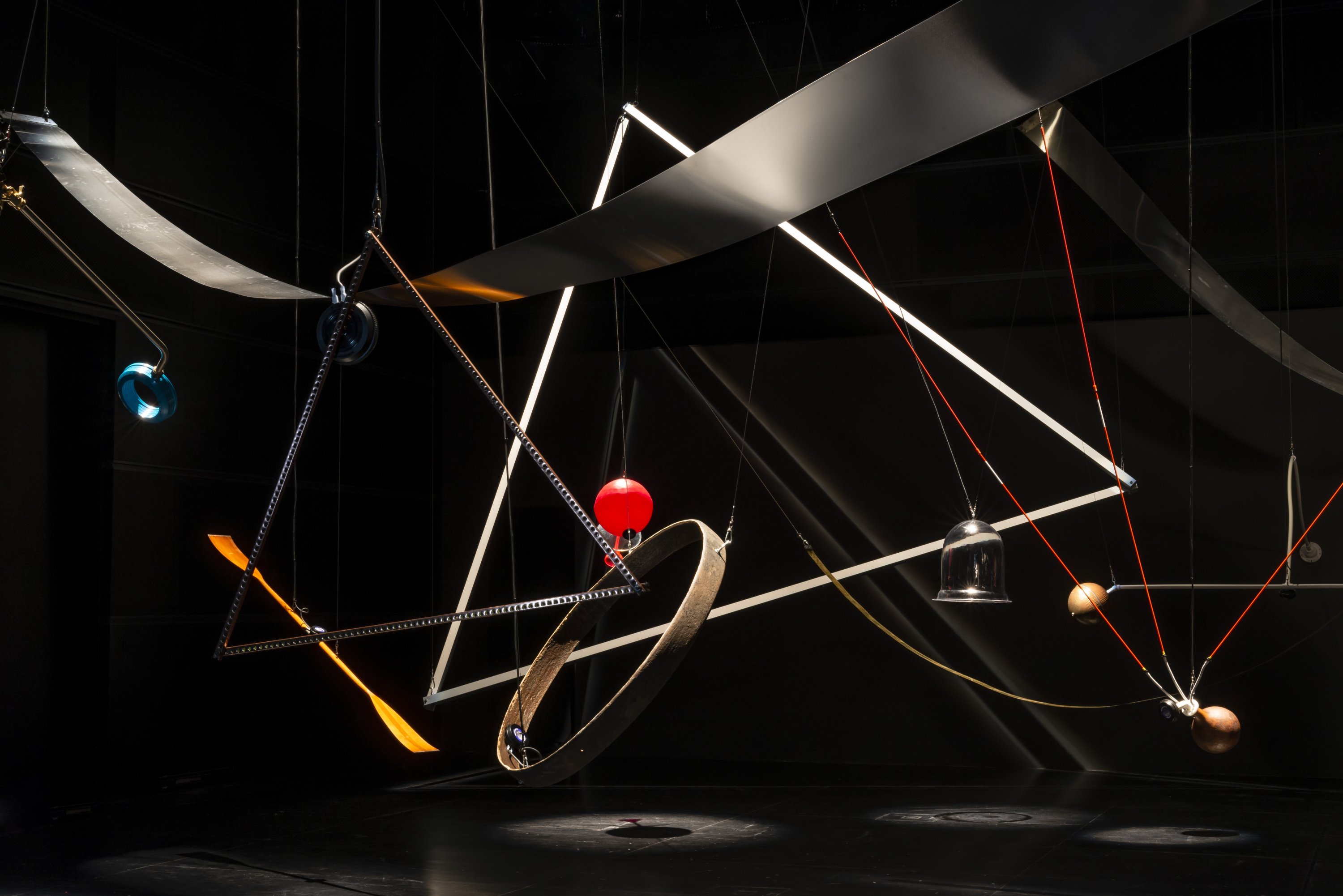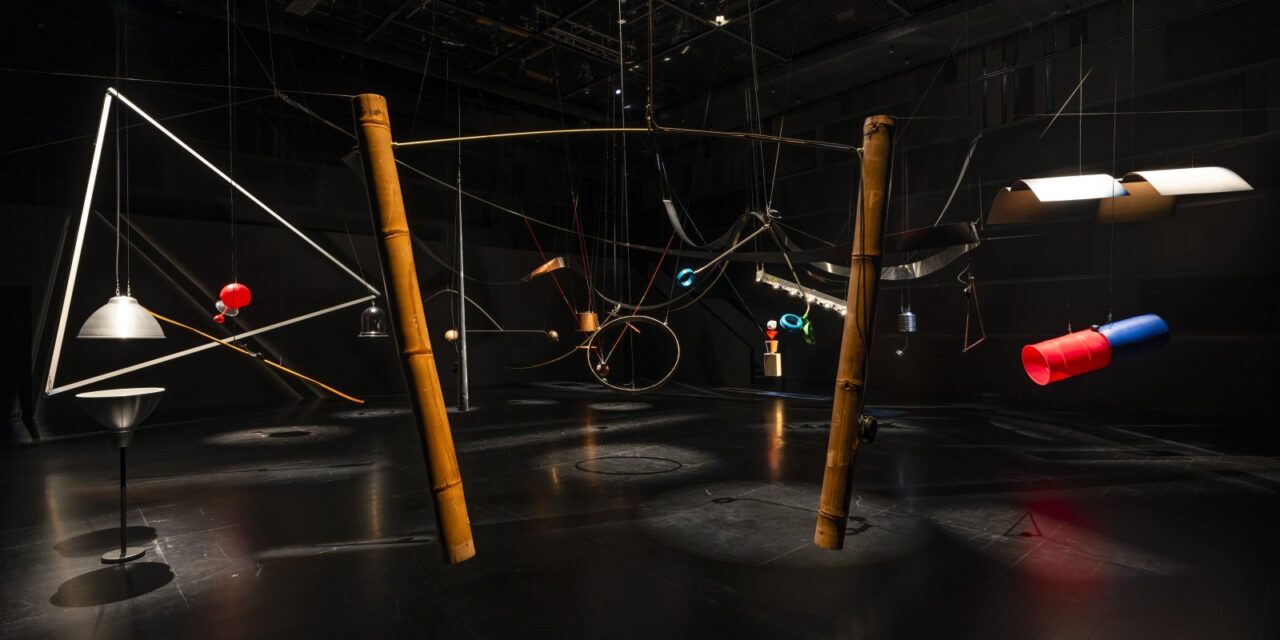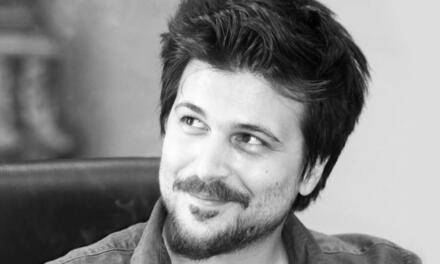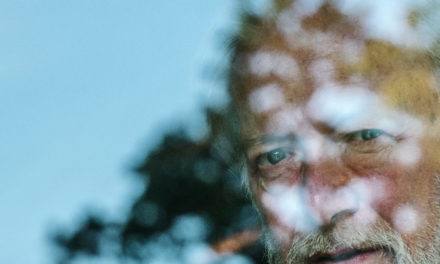In musical terms, the suspension is best known as sustain. In the narrative forms of cinema and literature, for just two examples, concepts like disbelief are suspended in everyday usage. But in music, it is rarer to consider phenomena beyond the legato of a voice penetrating the air when thinking about the sustain of notes. From a semantic point of view, sustain would also suggest sustenance. And truly, it is a quality of music to sustain, or even nourish, the heart. Yet, what music does not do, normally speaking, is suspended.
That normality has been flipped on its head for the remount of the Rainforest series, following the composition of music by David Tudor in collaboration with the equally legendary American dance choreographer Merce Cunningham in 1968. In the original dance production of Rainforest, Cunningham himself performed alongside his company. During its creation, dancers remembered him as a forest sprite, whose unencumbered energy was unleashed onstage and in the visionary movements that he inspired in his body and in those around him.
The achievement of Rainforest, despite impressions distanced by space and time, is to inspire an ambiance of freedom – that within the peaked ecology of earthly evolution, the wings and symbioses of creation defy gravity. Cunningham choreographed unorthodox movements for his dancers, surrounded by luminous assemblages of pillows and hanging, spindly objects. The sound installations that have come out of Tudor’s work as a composer continue to influence audiences today, over half a century later, and halfway around the world.
I was formerly a reviewer of performances at Joyce Theater in New York City, where Rainforest, and Cunningham overall, exacted a lasting, comprehensive impact on dance. It was like there was a constant shadow over the dance scene, and its silhouette was that of Cunningham in the midst of Rainforest, flitting to and fro, absolutely absorbed in his state of mind that could only be described as high-pitched caprice, which, like a Rainforest, was strong in its independence, a world unto itself, yet at once utterly interdependent with all of life.

Twenty found and constructed objects hang from the tall ceiling at Arter as part of Rainforest V (variation 3). (Courtesy of Arter)
On sound movement
The capricious character of Cunningham’s body onstage had a peculiar parallel with that of David Tudor offstage. In a lengthy interview, published with Rainforest V (variation 3), one of the countless prolific textual accompaniments enjoined to the world-class programming at Arter, Phil Edelstein, a leading creative voice within the organization behind the compositional remount, Composers Inside Electronics Inc., remembered living and working with David Tudor in the midst of their informal brainstorming.
Tudor lived a life reminiscent of his perhaps more famous contemporary, John Cage. Although Tudor was arguably the more battered soul among them, he was said to drain tincture-like medicines, gleaned from his pocket, at any given hour of the day. And he cooked, not unlike the amateur mycologist Cage, who entertained the likes of Yoko Ono with his craft of mushroom-based cuisine. Edelstein reminisced with a bittersweet tone of how Tudor was bent over a cutting board as often as he wrote music.
And it is that endearing, personable disposition that such midcentury artists as Cunningham, Cage, and Tudor sought to crystallize. While to liberals and progressives their art was deemed outlandishly avant-garde, they were, in fact, speaking to a broader mass than high art had ever come to approximate, simply by venturing steadfastly on the path of individual expression or, in other words, to show the raw human presence of a face amid the highfalutin productions of the stage arts, of institutionalized culture, while reinventing itself.
Together with like-minded composer John Driscoll, Edelstein fashioned the work of Composers Inside Electronics Inc. for the world premiere of the third variation of Rainforest V, specially tailored for Arter’s Karbon, a concert and installation space within the museum made for dynamic acoustical experiences. There are 20 found and constructed objects that hang from the tall ceiling, including large floats, plastic barrels, a copper tub, a plant pot, and a badminton racquet. The more artificial objects are juxtaposed with two pieces of bamboo, which instill an otherwise naturalistic mood to the otherworldly, surreal experiment in listening.
As above so below
Walkers, standers, ears, and eyes that move, glide and think are encouraged to change their perspective within “Rainforest V (variation 3),” from all sides and looking down from a platform overlooking the expanse of Karbon dimly lit within its black walls, touched by gleams of reflective light that streak the floor and bounce off of the metallic objects that suspend, orbital, turning. The concept room exudes a backstage aura, like a living landscape beneath a dense forest canopy, revealed to vision only slightly, mostly heard.
There are screeches of birdcall that echo, merging with the groans of monkeys and the chitter of insects. By hearing alone, a listener is immediately enwrapped and immersed in a habitat of ideas, where sounds and objects commingle as a web of experiential mutuality. Sound has the curious capacity to affect the perception of space, and Rainforest V (variation 3) has a transporting power, capable of transcending the urban environs of the Dolapdere quarter outside of Arter and also the cultural context of the gallery, and of artificial creativity, toward reflexive insight on human nature.
As a student of tropical biology and the sociology of conservation during my early years in university, I undertook research in the Amazonian rainforest, in the jungles of Peru. On a boat in the middle of the Pacaya-Samiria National Reserve for two weeks, days away from dry earth, entangled in protected wetlands as far as the eye could see in all directions, I was struck, foremost, by the volume of sound, its constant force and multifaceted detail, articulated from the tallest branch to the depths of the river basin that had captured the world imagination.
And in the core of Istanbul, where the knock and grind of construction bear down throughout Taksim, the artistic nexus that Dolapdere is becoming, between Arter, Evliyagil, Dirimart, and Pilevneli, is a performative ecology of ideas, constructed out of the concrete of Turkish art theory, set into place by lifelong careers in the business of visualizing impractical, its essential inventiveness and intellectual industry. The world premiere of Rainforest V (variation 3) at Arter is a testament to the vibrance of the land and its people beneath the stone of old thoughts renewed.
This article was originally published on Daily Sabah on January 4, 2021, and has been reposted with permission. For the original, click here.
This post was written by the author in their personal capacity.The opinions expressed in this article are the author’s own and do not reflect the view of The Theatre Times, their staff or collaborators.
This post was written by Matt Hanson.
The views expressed here belong to the author and do not necessarily reflect our views and opinions.



















